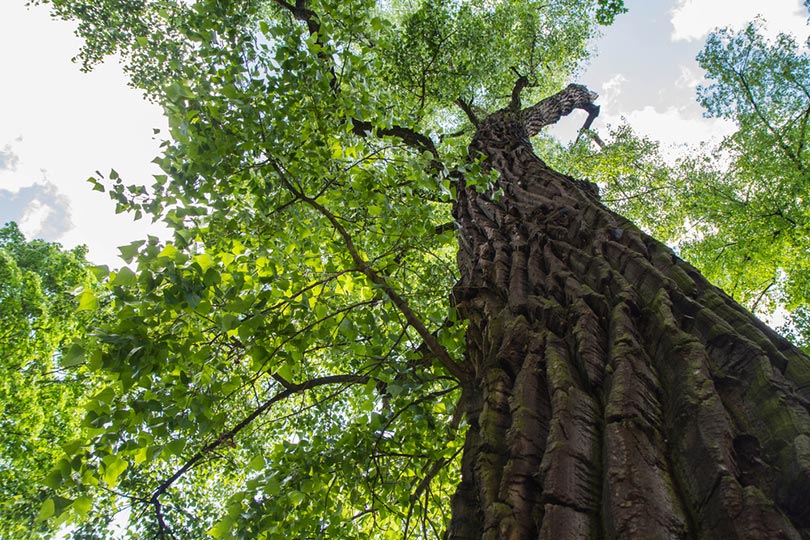What Is the State Tree of Kansas? Types, Characteristics, & Uses
-
Pete Ortiz
- Last updated:

The state of Kansas offers plenty of attractions and activities in its vast beautiful landscape. There are so many things to do in the state’s most populous cities of Kansas City, Wichita, or Topeka. Not only are they sprawling with cultural attractions and water parks, but they have some of the best midwestern restaurants that you can find in the state.
Kansas has moderate weather and can get pretty humid and hot in the summer. Its temperatures in the winter can get to the low 30s, but nothing to the extreme like you may experience in eastern regions of the US. And of course, there’s also a lot of history in the state, which can be uncovered, and some of its world-class museums and various galleries. But what is the state tree of Kansas? The Eastern Cottonwood (scientific name: Populus deltoides) is Kansas’ state tree and has been since 1937.
Kansas State Tree
These trees once acted as a landmark for travelers and visitors coming through the state. The capitol once housed a 20-foot plaque honoring the popular native tree.
There are rumors that the tree offered shade to former presidents including William McKinley, Benjamin Harrison, and William Howard Taft. In fact, there’s a “chain-saw chair” that was made from the stump after the tree fell. A chainsaw was used to carve the chair and the chair now sits at the Kansas Museum of History.

Habitats/Value of Cottonwood Trees
The majority of cottonwoods are found in moist areas such as wetlands areas, streams, and rivers. This unique ecosystem includes marshlands and cottonwood trees, and it provides a wonderful habitat for many species of animals.
Beavers are just one example of the many animals that thrive in these habitats. They eat the cottonwood’s bark, stems, and roots. To make their homes, they’ll also dig holes in the trees. Various species of birds will also use these empty cavities to build their nests and gather food. Many insects such as bark beetles, aphids, and caterpillars will eat bark from the trees.
The total biodiversity of cottonwood tree habitats is actually so vast that researchers have estimated that about 40 or so animal species are likely to benefit from them.
Types & Tree Characteristics
Three subspecies of cottonwoods exist. These subspecies include the Eastern Cottonwood, Fremont Cottonwood, and the Black Cottonwood. Each tree type has its own set of unique physical characteristics that makes it stand out from the rest. Believe it or not some homeowners find the cottonwood tree to be a nuisance.
The reason is that the seeds of female trees are covered in “cottonwood fluff”. This can cause allergic reactions and it can be a bit of a nuisance to clean up in the yard. The white fluffy sprouted seeds, which seem to travel everywhere, are one of the most unique features of cottonwood trees.
The trees are specifically known for their fluffy strings of seeds that can be carried long distances by the wind. People who have hay fever or allergies may experience wheezing and sneezing when near cottonwood trees or their blowing seeds. These factors explain why the tree is sometimes referred to as ” the most hated tree in America”.

Cottonwood Tree Uses
Cottonwood trees can provide shade in large areas if they are given the right conditions. Because of their hardiness and low maintenance, they’re a popular choice for urban planning. They can also be used to help restore the natural environment by preventing soil erosion.
These trees can also be used to create windbreaks and attract wildlife in large parks. And because cottonwood lumber is both soft and durable, there are many uses for it in the timber industry. The timber from cottonwood trees can be used to make things such as boxes, crates, pellets, as well as pulp for paper.
Wrapping Things Up
The Cottonwood tree is the state tree of Kansas. These trees are easily recognizable and are native to Kansas as well as other states in the US. One of the unique characteristics of the tree are its fluffy sprouted seeds, which almost look like thin cotton balls. The cottonwood tree has many uses in the timber industry and is a valuable resource for wildlife in the ecosystem in which it lives.
- https://www.treehugger.com/identify-the-cottonwoods-1341851
- https://www.kshs.org/kansapedia/cottonwood-tree/18215
- https://www.kansasforests.org/conservation_trees/products/deciduous/cottonwood.html
- https://www.travelks.com/kansas-magazine/articles/post/the-cottonwood/
Featured Image Credit: Aleksandra Duda, Shutterstock
Contents



